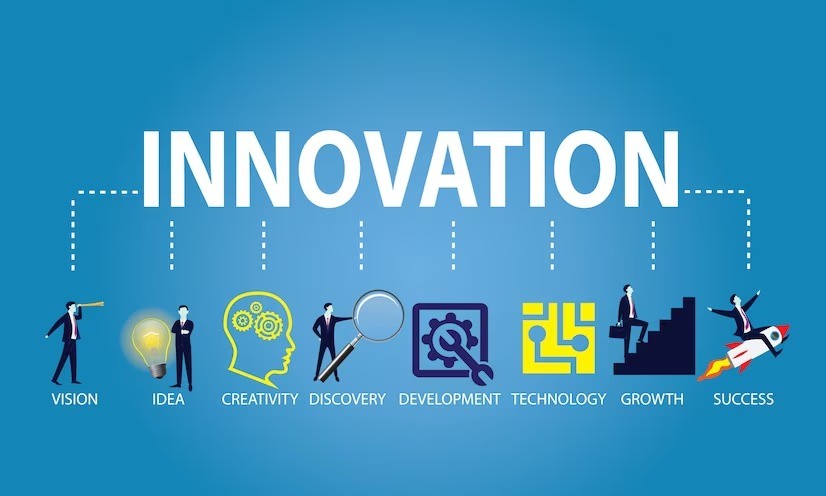Future of Innovation
Innovation has always driven human progress. From the wheel to the internet, groundbreaking inventions have reshaped the way we live, work, and communicate. Today, technology continues to accelerate at an unprecedented rate. But what does the future of innovation look like? How will emerging technologies impact our daily lives?
The Role of Technology in Driving Innovation
At the heart of modern innovation is technology. It sparks new ideas and transforms them into reality. From artificial intelligence (AI) to blockchain, technological advancements create new possibilities. These possibilities were once thought to be science fiction.
Artificial Intelligence and Machine Learning
AI and machine learning are some of the most exciting innovations today. These technologies allow machines to learn from data and make decisions without human intervention. In healthcare, AI helps doctors diagnose diseases and predict outbreaks. It also recommends personalized treatments. AI-powered tools like virtual assistants and recommendation algorithms change how we interact with devices and platforms.
Machine learning is particularly powerful because it analyzes massive datasets to uncover patterns. It offers insights that humans might miss. This technology is revolutionizing finance, marketing, and logistics. Companies use it to optimize operations, reduce costs, and enhance customer experiences. You can learn more about machine learning on IBM’s Machine Learning.
Blockchain Technology
Blockchain is the technology behind cryptocurrencies like Bitcoin. It offers a decentralized, transparent, and secure way to store and transfer data. Blockchain is also changing industries beyond digital currencies. For example, it is being used in supply chain management, voting systems, and healthcare data security.
Blockchain’s main advantage is its ability to create secure, tamper-proof records. Multiple parties can access these records without needing a centralized authority. This innovation can redefine trust and transparency in various sectors. Forbes discusses how blockchain is transforming business and technology.
Biotechnology and Genomic Medicine
Biotechnology is advancing rapidly. It has the potential to change medicine, agriculture, and environmental protection. Genomic medicine, for example, focuses on the role of genes in health and disease. Gene editing technologies, like CRISPR, enable scientists to modify genetic material. This could one day cure genetic disorders or prevent diseases before they start.
Biotechnology also impacts food production and sustainability. Researchers are developing crops that resist disease, pests, and climate change. Innovations in synthetic biology provide solutions for energy production and waste management, creating a sustainable future. Learn more at The Biotech Institute.
Renewable Energy and Green Technology
As climate change becomes urgent, innovations in renewable energy and green technology are crucial. Solar, wind, and hydropower technologies are becoming more efficient and affordable. Meanwhile, energy storage advancements tackle the challenges of intermittent renewable power sources.
Smart grids are one promising innovation. These grids use sensors, communication technology, and real-time data to optimize energy distribution. They help reduce waste and improve energy efficiency. Innovations in battery storage, such as solid-state batteries, may revolutionize how we store and use renewable energy. This makes renewable power more accessible. The International Renewable Energy Agency provides research on renewable energy technologies.
The Rise of Autonomous Systems
Self-driving cars, drones, and other autonomous systems are no longer a distant dream. These technologies are becoming a reality. They promise to revolutionize transportation, logistics, and agriculture.
Autonomous vehicles can reduce traffic accidents and improve fuel efficiency. Drones, already used in package delivery and agriculture, will play bigger roles in healthcare and disaster response.
Autonomous systems, while still in the early stages, can greatly improve efficiency, safety, and sustainability. Read more about how autonomous systems are reshaping industries at MIT Technology Review.
How Innovation is Shaping Industries
Innovation doesn’t just create new technologies—it reshapes entire industries. Cloud computing and the internet of things (IoT) are prime examples. Cloud computing enables businesses to scale without costly infrastructure. IoT devices connect everything from household appliances to industrial machinery, creating new efficiencies.
The healthcare industry is also being transformed by innovation. Telemedicine, wearable health devices, and AI-driven diagnostics are improving patient care. They also reduce costs and expand access. In retail, augmented reality (AR) is changing how we shop. Consumers can try on clothes virtually and visualize products before buying. You can learn more about IoT in business on IoT For All.
The Challenges of Innovation
Though innovation holds great promise, it comes with challenges. Ethical concerns are one key issue. For example, AI algorithms can perpetuate biases if not properly designed. Gene editing raises questions about safety, fairness, and regulation.
Ensuring innovation benefits everyone is another challenge. As technology advances, certain groups—especially in low-income or developing regions—could be left behind. It is vital that innovation remains inclusive and its benefits are shared equitably.
Conclusion: The Endless Possibilities of Innovation
The future of innovation is full of promise. AI, blockchain, renewable energy, and biotechnology are already helping us address the world’s most pressing challenges. However, we must approach innovation with responsibility. We need to create a future that is technologically advanced, ethical, sustainable, and inclusive.
As we push the boundaries of possibility, one thing is clear: The future of innovation will continue to drive progress, shaping the world in ways we can’t yet fully imagine.


















